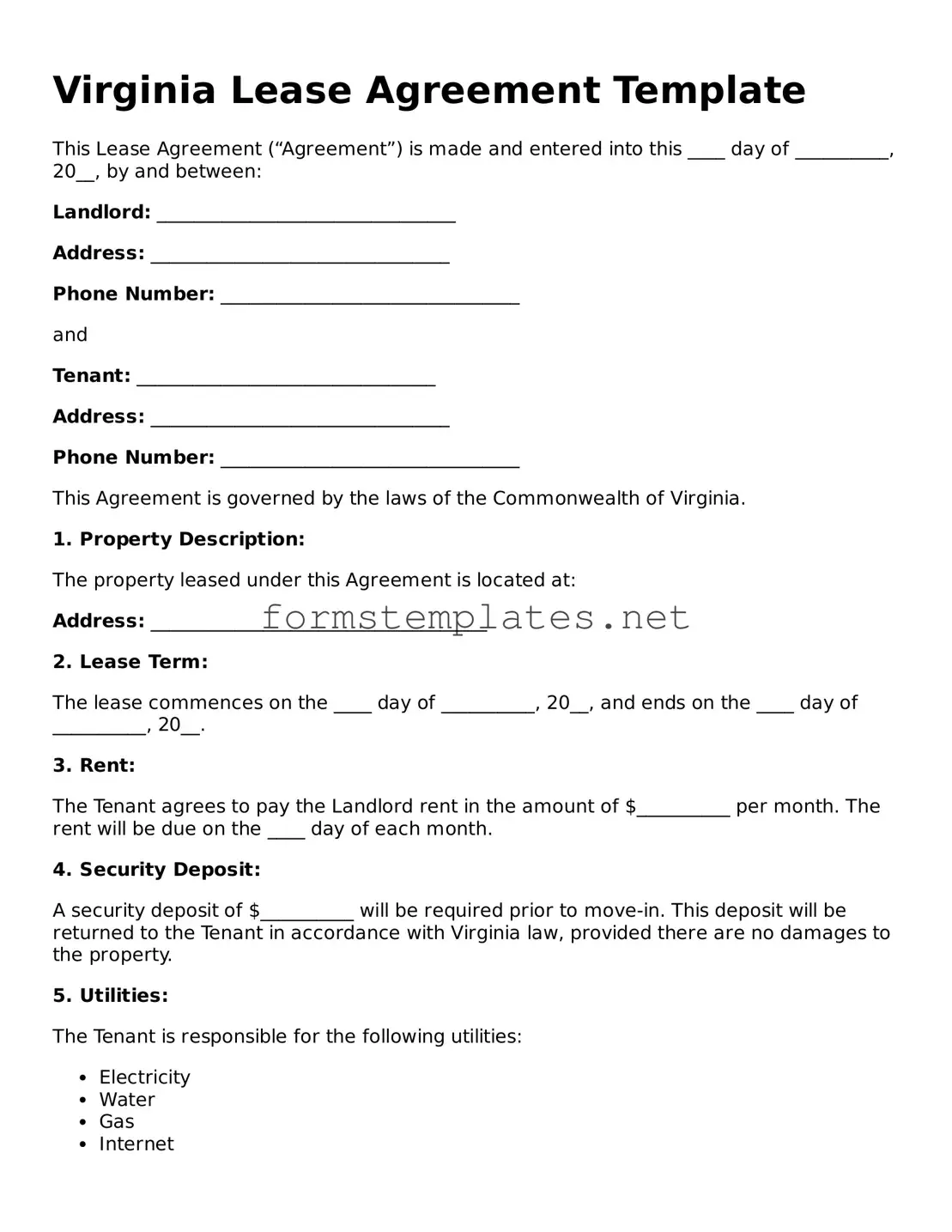Virginia Lease Agreement Template
This Lease Agreement (“Agreement”) is made and entered into this ____ day of __________, 20__, by and between:
Landlord: ________________________________
Address: ________________________________
Phone Number: ________________________________
and
Tenant: ________________________________
Address: ________________________________
Phone Number: ________________________________
This Agreement is governed by the laws of the Commonwealth of Virginia.
1. Property Description:
The property leased under this Agreement is located at:
Address: ____________________________________
2. Lease Term:
The lease commences on the ____ day of __________, 20__, and ends on the ____ day of __________, 20__.
3. Rent:
The Tenant agrees to pay the Landlord rent in the amount of $__________ per month. The rent will be due on the ____ day of each month.
4. Security Deposit:
A security deposit of $__________ will be required prior to move-in. This deposit will be returned to the Tenant in accordance with Virginia law, provided there are no damages to the property.
5. Utilities:
The Tenant is responsible for the following utilities:
- Electricity
- Water
- Gas
- Internet
6. Maintenance and Repairs:
The Tenant agrees to keep the property in good condition and promptly notify the Landlord of any necessary repairs.
7. Pets:
Pets are (allowed/not allowed) on the premises.
8. Governing Law:
This Agreement shall be governed by the laws of the Commonwealth of Virginia.
9. Signatures:
By signing below, both parties agree to the terms set forth in this Lease Agreement.
Landlord Signature: ________________________ Date: ___________
Tenant Signature: ________________________ Date: ___________
